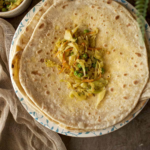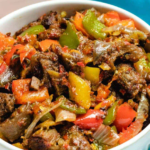If you have a sweet tooth and a penchant for indulgent treats, then East African Mahamri is sure to captivate your taste buds. Mahamri, also known as Mandazi or Swahili Doughnuts, is a beloved snack in many East African countries, including Kenya, Tanzania, and Uganda. These golden, pillowy delights are deep-fried to perfection and infused with the irresistible aroma and flavor of coconut, making them a truly decadent and satisfying treat.
The Essence of Mahamri
Mahamri is more than just a doughnut—it is a cultural delight that reflects the vibrant culinary traditions of East Africa. The name “Mahamri” is derived from the Arabic word “ma’amoul,” meaning filled pastry. While the traditional Mahamri recipe does not involve filling, the term has been adopted to describe these delightful sweet treats.
The Making of Mahamri
The process of making Mahamri involves a few simple ingredients that come together to create a heavenly snack. The dough is prepared using a combination of all-purpose flour, sugar, yeast, and coconut milk. The coconut milk not only imparts a rich and fragrant flavor but also adds a subtle hint of sweetness to the dough.
Once the dough ingredients are combined, they are kneaded until smooth and elastic. The dough is then left to rise, allowing the yeast to work its magic and create a light and airy texture. After the dough has doubled in size, it is divided into small portions and rolled into circular shapes, resembling small discs or triangles.
Frying to Perfection
The next step in the Mahamri-making process is frying. A generous amount of vegetable oil is heated in a deep pan or pot until it reaches the right temperature. The Mahamri are carefully placed in the hot oil and fried until they turn golden brown on both sides. The frying process gives the doughnuts their signature crispy exterior while keeping the inside soft and fluffy.
The Coconut Flavors
What sets Mahamri apart from other doughnuts is the infusion of coconut flavors. The use of coconut milk in the dough imparts a delicate sweetness and a subtle tropical aroma that elevates the taste of these treats. Some variations of Mahamri even incorporate shredded coconut into the dough, adding a delightful texture and an extra burst of coconut goodness.
Serving Mahamri
Mahamri is traditionally enjoyed with a cup of tea or coffee, making it a perfect accompaniment to breakfast or an afternoon snack. It is often served with a side of coconut chutney or a sprinkle of powdered sugar for an added touch of sweetness. The soft, fragrant Mahamri paired with a hot beverage creates a comforting and satisfying combination.
The Significance of Mahamri
In East African cultures, Mahamri holds cultural significance and is often prepared for special occasions, family gatherings, and festive celebrations. It brings people together, fosters a sense of community, and allows for the sharing of joyful moments around the table. Mahamri represents the warmth and hospitality of East African cuisine and showcases the region’s unique culinary heritage.
East African Mahamri is a delightful indulgence that combines the sweetness of doughnuts with the tropical flavors of coconut. These fried treats encapsulate the essence of East African cuisine and bring a touch of cultural heritage to your palate. Whether enjoyed as a breakfast treat, a tea-time snack, or a dessert, Mahamri offers a delicious escape to the flavors and aromas of East Africa. So, take a bite of these fluffy, coconut-infused doughnuts, and let yourself be transported to the vibrant culinary world of East Africa.








